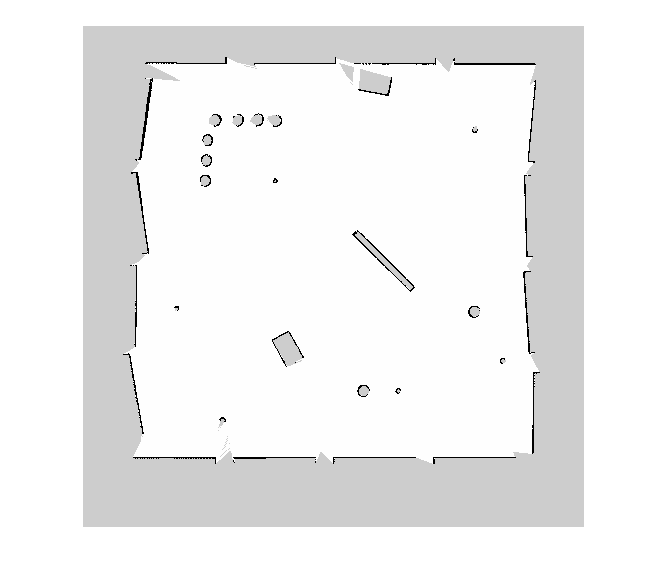show
Display 2-D occupancy map
Description
show( displays the occupancy
grid map)map in the current axes, with the axes labels
representing the world coordinates.
show( displays the
occupancy grid map,'local')map in the current axes, with the axes
labels representing the local coordinates instead of world coordinates.
show( displays the
occupancy grid map,'grid')map in the current axes, with the axes
labels representing the grid coordinates.
show(___,
specifies additional options specified by one or more name-value pair
arguments.Name,Value)
mapImage = show(___)show.
Examples
Input Arguments
Name-Value Arguments
Outputs
Version History
Introduced in R2019b
![Figure contains an axes object. The axes object with title Occupancy Grid, xlabel X [meters], ylabel Y [meters] contains an object of type image.](../../examples/nav/win64/CreateAndModifyAnOccupancyMapExample_01.png)
![Figure contains an axes object. The axes object with title Occupancy Grid, xlabel X [meters], ylabel Y [meters] contains an object of type image.](../../examples/nav/win64/CreateAndModifyAnOccupancyMapExample_02.png)
![Figure contains an axes object. The axes object with title Occupancy Grid, xlabel X [meters], ylabel Y [meters] contains an object of type image.](../../examples/nav/win64/CreateAndModifyAnOccupancyMapExample_03.png)

![Figure contains an axes object. The axes object with title Occupancy Grid, xlabel X [meters], ylabel Y [meters] contains an object of type image.](../../examples/nav/win64/ConvertPGMImageToMapExample_02.png)